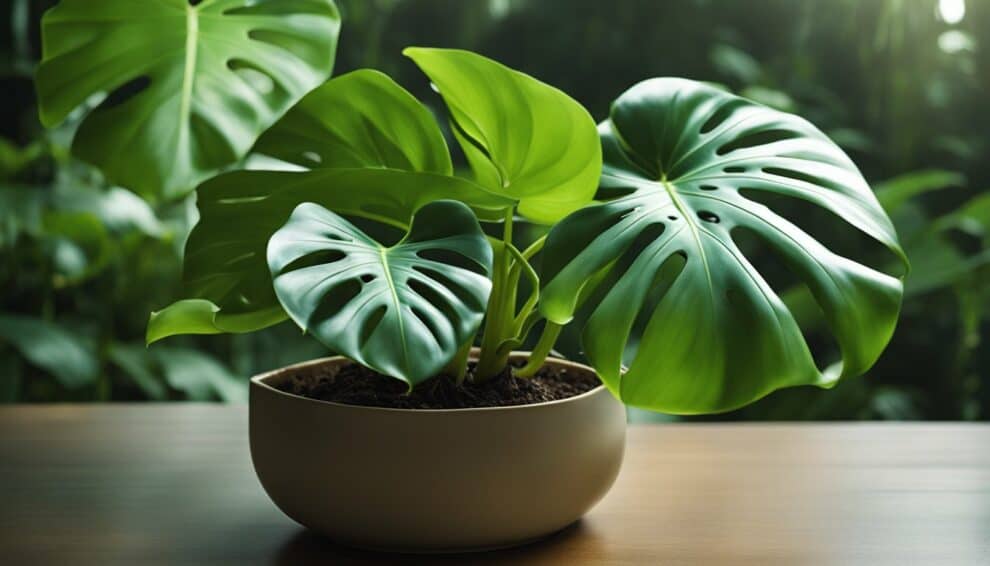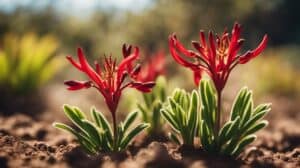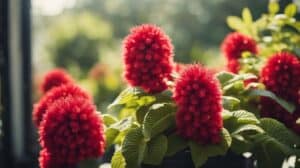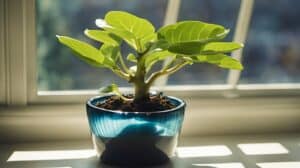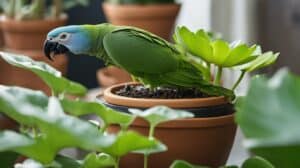Monstera Deliciosa, also known as the Swiss Cheese Plant, is a popular houseplant due to its unique foliage and ease of care.
Its large, glossy leaves with distinctive holes and notches make it a striking addition to any indoor jungle.
If you’re a plant enthusiast looking to expand your collection, propagating your Monstera Deliciosa is a simple and rewarding process.

Propagation is the process of reproducing a plant from a parent plant, either through seeds or asexual reproduction.
Monstera Deliciosa can be propagated through stem cuttings, which involves taking a cutting from the parent plant and rooting it in water or soil.
This method allows you to create new plants that are genetically identical to the parent plant, ensuring that you’ll have the same unique foliage in your expanded collection.
In this article, we’ll guide you through the process of Monstera Deliciosa propagation, from selecting the right cutting to caring for your new plant.
Understanding Monstera Deliciosa
Characteristics of Monstera Deliciosa
Monstera Deliciosa, also known as the Swiss Cheese Plant, is a popular houseplant due to its unique and attractive foliage.
It is native to the tropical rainforests of Central and South America and can grow up to 20 feet tall in its natural habitat.
The plant has large, glossy, heart-shaped leaves with distinctive holes and splits, which are thought to help the plant withstand heavy rain and high winds.
In addition to its striking appearance, Monstera Deliciosa is known for its air-purifying qualities.
It is an effective absorber of harmful chemicals such as formaldehyde, benzene, and trichloroethylene, making it a great choice for indoor spaces.
Benefits of Propagation
Propagating Monstera Deliciosa is a simple and rewarding process that allows plant enthusiasts to expand their collection and share their love for this beautiful plant with others.
There are several methods of propagation, including stem cuttings, air layering, and division.
Propagation not only allows you to grow new plants, but it also promotes the health and vitality of your existing Monstera Deliciosa.
By removing excess growth and propagating the plant, you can encourage new growth and prevent the plant from becoming too large or leggy.
Overall, understanding the characteristics of Monstera Deliciosa and the benefits of propagation can help plant lovers expand their jungle and enjoy the beauty and benefits of this unique plant.
Propagation Basics

Best Time to Propagate
Monstera Deliciosa can be propagated at any time of the year, but the best time to do so is during the spring and summer months when the plant is actively growing.
This is because the plant will be better equipped to handle the stress of propagation during this time and will be more likely to produce healthy, new growth.
Tools and Materials Needed
To propagate Monstera Deliciosa, you will need the following tools and materials:
- Pruning shears or a sharp knife
- A clean, sharp pair of scissors
- A rooting hormone (optional)
- A container filled with water or a well-draining potting mix
- A plastic bag or a clear plastic container
Before you begin, make sure that your tools and materials are clean and sterile to prevent the spread of disease.
If you are using a rooting hormone, follow the manufacturer’s instructions carefully.
Once you have everything you need, it’s time to start propagating your Monstera Deliciosa!
Propagation Methods

Monstera Deliciosa is a popular indoor plant that can add a touch of tropical beauty to any room.
One of the best things about this plant is that it is relatively easy to propagate, which means you can expand your jungle without having to spend a lot of money.
Here are three propagation methods that you can use to grow new Monstera Deliciosa plants.
Soil Propagation Technique
The soil propagation technique involves taking a cutting from the mother plant and planting it directly into soil.
To do this, you will need to make a clean cut just below a node on the stem of the plant.
The cutting should be at least 6 inches long and have a few leaves attached.
Once you have your cutting, you can plant it in a pot filled with a well-draining soil mix.
Keep the soil moist and in a warm, bright location, and your cutting should start to grow roots within a few weeks.
Water Propagation Technique
The water propagation technique is another easy way to propagate Monstera Deliciosa.
To do this, you will need to take a cutting just like with the soil propagation technique.
Instead of planting the cutting in soil, you will place it in a container filled with water.
Make sure that the node where you made the cut is submerged in the water. Keep the container in a warm, bright location and change the water every few days.
Within a few weeks, you should see roots starting to grow from the node.
Air Layering Method
The air layering method is a more advanced propagation technique that involves creating a new plant from a branch that is still attached to the mother plant.
To do this, you will need to make a small cut in the branch and then wrap it in moist sphagnum moss.
Cover the moss with plastic wrap to keep it moist and in place.
Over time, roots will start to grow from the cut, and you can then cut the branch off from the mother plant and plant it in soil or water.
These three propagation methods are all effective ways to grow new Monstera Deliciosa plants.
Choose the method that works best for you and enjoy expanding your indoor jungle!
Aftercare for Propagated Monsteras

Once your Monstera Deliciosa cuttings have rooted and are ready to be transplanted, it’s important to provide them with proper aftercare to ensure they thrive in their new environment.
Here are some tips for caring for your propagated Monsteras:
Monitoring Water Levels
It’s important to monitor the soil moisture levels of your propagated Monsteras to prevent over or under watering.
Overwatering can lead to root rot, while underwatering can cause the leaves to wilt and turn brown.
To check the soil moisture levels, stick your finger about an inch into the soil. If it feels dry, it’s time to water.
If it feels moist, wait a few more days before checking again.
Providing Adequate Light
Monsteras thrive in bright, indirect light.
Place your propagated cuttings in a location where they can receive plenty of natural light, but avoid direct sunlight as it can scorch the leaves.
If you’re growing your Monsteras indoors, consider placing them near a window that receives plenty of natural light or using artificial grow lights to supplement their light needs.
When to Transplant
Once your propagated Monsteras have outgrown their current pot, it’s time to transplant them into a larger container.
Look for signs such as roots growing out of the drainage holes or the soil drying out quickly to determine if your plant needs to be repotted.
Use a well-draining potting mix and make sure the new container has drainage holes to prevent water from sitting in the soil.
By following these simple aftercare tips, you can help your propagated Monsteras grow into healthy, thriving plants.
Frequently Asked Questions

How can I propagate Monstera using just a leaf?
While it is possible to propagate Monstera using just a leaf, it is not the most effective method.
The leaf will not produce roots, so it is best to take a stem cutting that includes at least one node.
What’s the best place to cut when propagating a Monstera plant?
When propagating a Monstera plant, it’s best to cut just below a node. This is where the plant will produce new roots.
Be sure to use a clean, sharp tool to make a clean cut.
Can you grow a new Monstera plant in water, and how?
Yes, you can grow a new Monstera plant in water. Simply take a stem cutting that includes at least one node, and place it in a jar of water.
Change the water every few days to keep it fresh, and wait for roots to form before transplanting the cutting into soil.
What are the steps to propagate Monstera using aerial roots?
To propagate Monstera using aerial roots, simply cut the stem below the aerial root and plant it in soil.
The aerial root will eventually grow into a new plant.
How long does it typically take for a Monstera cutting to sprout a new leaf?
It can take several weeks to several months for a Monstera cutting to sprout a new leaf.
Be patient and make sure the plant has plenty of light and water.
Does propagating a Monstera encourage the parent plant to grow more?
Yes, propagating a Monstera can encourage the parent plant to grow more. When you remove a stem cutting, the plant will produce new growth to replace it.






